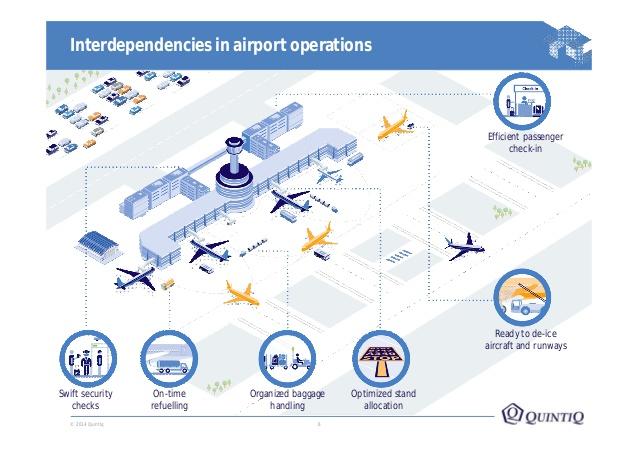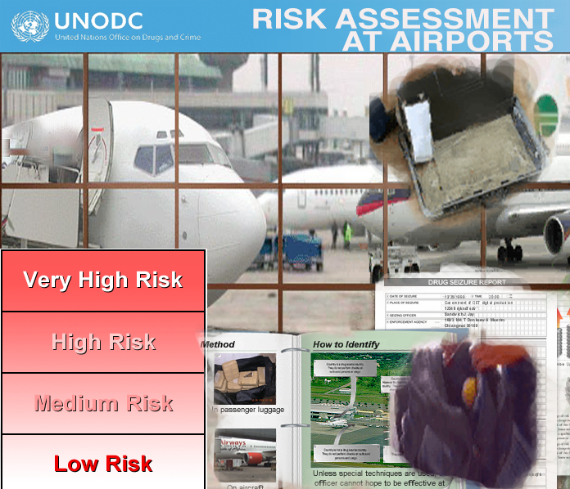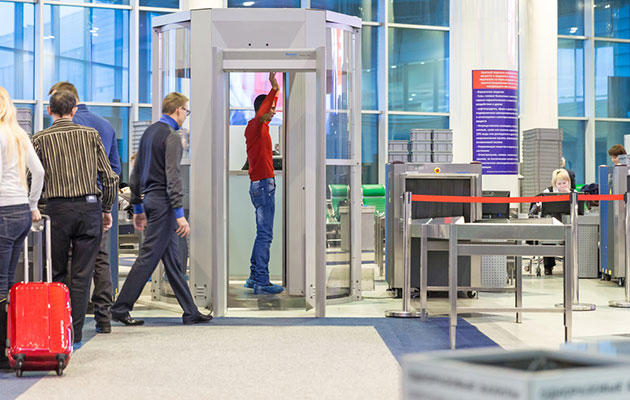Introduction
Aviation is an integral, even crucial, component of the globalised world. For this reason, this mode or transportation is given a great deal of attention by governments and other agencies. Modern aviation performs a wide array of tasks, from the transporting of cargo to guaranteeing a certain strategic advantage to a state. However, the unique diversity of the given workload has resulted in the increased complexity of the functioning of companies in this sphere, necessitating an efficient approach to monitoring performance. On a side note, modern aviation is also considered one of the safest means of transport.
Statistics show that the number of aviation-related accidents is much lower in comparison to cars, trains, and other modes of transport (CASA 2012). The combination of all these aspects makes aviation a promising sphere that should be cultivated to enhance the further evolution of the modern world. Yet, like any other fast-growing sector, it also faces numerous challenges that result from the peculiarities of the modern environment and people’s demands. Moreover, the increased importance of aviation is resulting in the evolution of numerous hazards that should be taken into account in the effort to guarantee safety to passengers. In this regard, the evaluation of current safety and security hazards is a main task for the modern aviation industry.
Background
The last several decades could be characterised by increased tension in international relations. Instability in different regions has resulted in the appearance of a set of problems and security concerns. Moreover, the rise of terrorism and its spread throughout the globe has also contributed to the great importance of security measures that must be explored to guarantee the security and safety of passengers and personnel working in the aviation industry.
In this regard, as one of the most strategic and important means of transport, aviation nowadays has become extremely vulnerable as it has attracted an increased level of attention. The sad experience of numerous tragic events lends credence to the fact that the given sphere remains both attractive and vulnerable. For this reason, there is a great need for efficient approaches to finding and subsequently eliminating loopholes in security systems. In this regard, a comprehensive investigation of the current safety threats and hazards to the aviation industry, along with defences that could be used to avoid hazardous complications, should be investigated to guarantee the enhanced safety of all passengers.
Identification of Hazards
First, to be able to improve the situation in the sphere of security and guarantee that all possible threats are eliminated, it is crucial to perform a comprehensive investigation of the current working environment of a particular airport, identifying all possible hazards that might appear in the course of its functioning. The determination of threats and the possible damage they could wreak to equipment, environment or people is one of the most important aspects of any efficient security system as it guarantees that a specific plan of action will be ready for immediate implementation if one or another emergency should arise (A framework for aviation cybersecurity 2013).
Moreover, if all potential threats are identified, personnel can be trained to respond appropriately and in the most efficient way. Additionally, detailed information about potential threats that might result in the collapse of the airport’s operations or cause even more severe circumstances will help efforts to improve the current security system in use in the airport and contribute to its further enhancement, In addition, at present, several spheres of operation require significant attention because of their importance and vulnerability, including design factors, procedures, communications, personnel, organisational factors, working environment and regulatory factors.
Design factors
Design factors remain an important component in the endeavour to guarantee security and avoid the occurrence of any complex or problematic situations. The allocation of facilities is crucial for the efficient functioning of an airport and preservation of order. When security zones are defined in an appropriate way, the personnel’s task becomes much easier. Additionally, dividing the airport into several zones with different layers of importance and suitable applied security measures is also crucial (Asset value, threat/hazard, vulnerability, and risk n.d.). For instance, in accordance with the latest investigations, the aircraft, fuel storage areas, and passenger terminals are considered vulnerable areas.
For this reason, a drawback in design factors might result in the appearance of a certain threat to these specific objects and, by extension, people’s health and safety. It becomes evident that the evaluation of this factor is crucial; protection in the form of physical barriers should be introduced once a vulnerable facility is assembled. Furthermore, control of the flow of people is also one of the most important aspects that might lead to vulnerability in the case of inefficient design. In an emergency, a crowd that is out of control might result in numerous deaths. For this reason, an airport facility should be designed in a way to guarantee fast evacuation through rear-door entrances.
Procedures
Identification of hazards is also related to procedures performed by personnel to guarantee a unit’s efficient functioning. At the moment, the majority of the most crucial procedures performed by specialists working at the airport are exercised through computers. Every airport has its own internal network that is used to perform different activities and monitor various aspects of its operations. However, the increased convenience of the given approach also introduces a new sort of threat.

The modern digital nature of society is extremely vulnerable to hacker attacks that might paralyse the functioning of any unit and result in its collapse. For this reason, this new hazard should be taken as one of the main elements that must be considered when protecting an airport from any potential attacks (Hall 2015). The criminal use of technology is a common practice that is nowadays employed both by hackers and terrorists to compromise any security system and make it vulnerable. For this reason, the most crucial procedures performed by personnel via computers should be protected using appropriate software to safeguard and guarantee the airport’s functioning.
Communications
Communications are closely connected to the previous aspect as workers at the airport use the same network and telecommunication inside channels to delegate tasks and share the most important information related to the airport’s operations. It is obvious that this information could be used to do harm to an airport and undermine its efficiency. Furthermore, the fast-moving evolution of different digital devices has resulted in an increased probability of data theft with the help of malicious software connected to specified devices (Harris 2002).
For this reason, one of the main tasks of a modern security service is to align a protected private channel that could be accessed only by airport workers, helping them to improve overall efficiency and outcomes. At the same time, communications are extremely important in the case of emergency as synchronised actions are the basis of any security system response. If workers are able to share information without any complications, they will more likely be able to prevent any potential crime or terrorist act. For this reason, this very aspect is often one of the first targets to suffer from various attacks, and it should be given the greatest attention.
Personnel
Human factors could also pose a significant threat to an airport’s functioning and people’s security. The fact is that human error has always been an ongoing issue. It is scarcely predictable and yet has the capacity to have a significantly negative impact on the functioning of any unit. Moreover, all specialists working in an airport perfectly realise the great responsibility that comes from the character of their work and from the complexity of the tasks they perform (Raphael 2013).
This pressure can lead to an increased level of stress, which might result in the arising of numerous misunderstandings. Human factors could be considered the first significant threat to an airport’s functioning. Due to the crucial nature of their work, airport personnel should pass a strict examination because of the increased demands for security and the requirement to guarantee safety to the people who are using the airport’s services.
For this reason, the airport safety service should also monitor personnel and the state of any worker. Improved security systems actually demand innovation from those who would interfere with their functioning. For this reason, there have been several cases when workers in an airport performed terrorist acts or applied for a job with the intention to intrude and act at a certain moment of time (ICAO n.d.). The combination of these aspects makes personnel an important factor that should be controlled.
Organisational Factors
Organisational factors could also offer a certain threat to security. The modern airport is a complex entity that consists of numerous subdivisions that should be aligned in an efficient system that is set to function without significant problems. However, if one or more elements of the mechanism should work inefficiently or fails to act appropriately, the vulnerability of the whole system increases significantly (ICAO n.d.a). In addition, very often the coordination between different departments of an airport becomes the main target for different attacks or attempts to undermine the functioning of a facility, which can result in panic and lead to causalities.
At the same time, organisational factors like the cooperation between an airport safety service and other departments are an integral part of the whole airport’s existence. Yet, if there is no pattern that could be explored if an emergency situation arises, overall safety suffers. Passengers could feel vulnerable if a lack of adequate understanding between the core components of an airport were to become evident; this would have a negative effect on the facility’s image as well as individuals’ feeling of security, making this one of the most important problems, and one that should be given great attention.
Working Environment
Another factor that might either improve or decrease the overall security of the airport is its working environment. The given term encompasses a number of different factors like the cooperation between all systems and departments, the workers’ commitment, the overall atmosphere, comprehension of main tasks, etc. Today, every airport is considered a complex system, the functioning of which is preconditioned by different factors that should be taken into account to ensure improved operation.
Additionally, a lack of cooperation between these systems might introduce a great potential threat to both passengers’ and workers’ safety. In this regard, a comprehensive investigation of the main factors that comprise the working environment of a particular airport is crucial for its security service. For instance, according to the latest research, recent terrorist attacks have revealed a lack of coordination between the airport’s departments that were tasked with guaranteeing passengers and workers’ safety (Price 2013). If one element fails, the whole system may become inefficient.
Regulatory Factors
Finally, in assessing the functioning of any airport to identify potential threats or hazards, it is also crucial to mention regulatory factors introduced to monitor the work of all systems and people. These regulatory factors contribute to an improved understanding of the main competencies and the importance of observing basic laws and limitations introduced to guarantee enhanced security in an airport. Regular examinations are also a part of this factor in terms of impacting security.
Therefore, a lack of control can result in increased vulnerability and the possibility of new hazards. For example, regular assessment of the main vulnerabilities might result in increased safety and identification of new threats to be eliminated. Experts who investigated recent terrorist acts in airports have stated that these attacks became possible due to a lack of control and monitoring of the main facilities’ operation (Price 2013). In this regard, it is crucial to assure the creation of an efficient regulatory system that will be able to assess and eliminate threats that come from terrorism, disregard of previous aspects, increased complexity of modern software, etc.
Defences
Considering the above-mentioned information, it is possible to state that numerous vulnerabilities have the capacity to undermine the functioning of an airport and result in the collapse of the whole security system. For this reason, the need for defences becomes obvious. First, the airport security system should be ready to respond to any or all of the above-mentioned challenges to protect passengers and workers from potential threats.
To accomplish this, several lines of defence should be introduced that are able to guarantee safety to all facilities such as landing zones, terminals, fuel storage areas, etc. Furthermore, there is a need for efficient software that will be able to establish digital security and align enhanced coordination between the main departments, guaranteeing the airport’s functioning. Specialists have distinguished several approaches that could be employed (Security guidelines for general aviation airports n.d.). Strict control over individuals as well as a comprehensive assessment of current vulnerabilities should be combined with the use of innovative technologies like metal detectors, security posts, etc.
Risk Assessment

Furthermore, risk assessment tools could also be considered a part of a modern airport security system. As stated above, the ability to investigate the unit’s current vulnerabilities is crucial in creating efficient protection that will be able to eliminate the majority of threats. Furthermore, risk assessment also helps in determining the degree of a potential threat and understanding the order to establish in giving attention to different vulnerabilities.
For instance, there are many different aspects that could be related to security issues, and each should be provided with the most appropriate solution. However, the given process is very resource-consuming, which means that a great deal of money should be spent to create an appropriate approach. If all issues are addressed at the same time, security might suffer because of a limitation with regard to efforts and resources. Thus, risk assessment helps to determine the most problematic issue and address it in terms of priority.
Problem Definition
The prioritisation involved in risk assessment is closely connected with problem definition. The term stands for the set of activities aimed at the detailed investigation of the current state of a certain aspect and determination of the most problematic feature that should be given attention. Specialists state that efficient and appropriate problem definition comprises the greater part of final success and guarantees that a certain vulnerability would be found and eliminated (Sweet 2008).
The process might also be characterised as complex because of the necessity to take into account a number of factors impacting the sphere and preconditioning the appearance of certain alterations in the airport’s functioning. In any event, when trying to establish an efficient security system, problem definition gains in relevance as it guarantees the ability to mitigate the negative impact of such factors as the constant appearance of new threats, increased probability of terrorist acts, cybercrime, etc. When a security specialist is able to define a problem, the approaches used to solve it will become more efficient.
Tools Used to Eliminate the Threat
Therefore, risk assessment and problem definition also precondition the choice of the tool that could be adopted to eliminate the threat. Furthermore, these tools can be applied in different spheres. For instance, if a specialist using risk assessment tools and a problem definition approach identifies a problem in the current security system, an appropriate tool should be used. If the problem is connected with passengers’ safety and extremist actions, passenger screening, metal detectors, canines, etc. could be implemented as tools to improve security and establish a more efficient system.


The variety of tools that are used in modern security systems demonstrates the diverse character of the challenges that may arise today.
Recordings
In the pursuit of security, it is very important to record observations and findings because of the great practical value of this sort of material. The given credible data contributes to improved comprehension of the issue and helps specialists to create more efficient approaches that can be used to eliminate the threat (Tamasi & Demichela 2011). Moreover, in the process of drawing on the experience obtained from previous terrorist acts, data collected with the help of these recordings can help enhance investigation. In this regard, the hazards that threaten the airport’s security system demand constant recording as one way to analyse the level of threat with the goal of decreasing or deterring future occurrence.
Maintenance
The constantly-changing character of different hazards and the tendency towards the appearance of new ones precondition the unique importance of the security system’s maintenance. This means not only the preservation of the current level of its working capacity but the need for its constant improvement. The terrorist threat that has arisen to assail the modern world also affects airports, which have become primary targets for attacks. For this reason, a security system’s maintenance becomes a key to successful prevention, along with the ability to act in developing situations.
Perspectives
Therefore, considering the character of the challenges the modern world faces and the tendency towards a further increase in the level of tension in relations between different states, the appearance of new security concerns remains likely. Even now, airports face such problems as cybercrime and terrorism; however, in future, the number and variety of these challenges will increase significantly. For this reason, security systems should consistently improve that they might be able to be effective in the modern environment. Additionally, the enhanced cooperation between different services will also guarantee positive outcomes and safety for passengers and workers.
Recommendations
With this in mind, it is possible to recommend the further improvement of the given sphere in order to protect people from potential threats that might appear. In addition, this process could be fostered by risk assessment and problem definition based on the fact that as the most important hazards are discovered, the process of creating appropriate solutions can become more efficient (U.S. House of Representatives Committee on Homeland Security 2011). In this regard, the main tools used for the investigation of hazards should be applied to the most problematic issues to assess them and create new tools. Only under these conditions would we be able to admit at least some improvement.
Conclusion
Altogether, the current functioning of any airport could be undermined by a great number of hazards. These might include terrorist attacks, environmental problems, organisational issues, poor facilities allocation, drawbacks of the security system, and more. However, the efficient evaluation of hazards and risk assessment can help to identify these problems and respond to them in an efficient way. The elimination of numerous threats that currently exist continues to be a great problem for the modern security service.
Reference List
A framework for aviation cybersecurity 2013. Web.
Asset value, threat/hazard, vulnerability, and risk n.d. Web.
CASA 2012, Safety risk management. Web.
Hall, R 2015, The transparent traveler: the performance and culture of airport security, Duke University Press Books, Durham, NC.
Harris, D 2002, How to really improve airport security. Web.
ICAO n.d., Risk context statement. Web.
ICAO n.d.a, The ICAO aviation security programme. Web.
Price, J 2013, Practical aviation security, second edition: predicting and preventing future threats (Butterworth-Heinemann homeland security), Butterworth-Heinemann, New York, NY.
Raphael, R 2013, Airport security: a national security challenge, German Marshall Fund, Washington, DC.
Security guidelines for general aviation airports n.d. Web.
Sweet, K 2008, Aviation and airport security: terrorism and safety concerns, CRC Press, Boca Raton, FL.
Tamasi, G & Demichela, M 2011, ‘Risk assessment techniques for civil aviation security’, Reliability Engineering & System Safety, vol. 96, pp. 593-599.
U.S. House of Representatives Committee on Homeland Security 2011, Ten years after 9/11: assessing airport security and preventing a future terrorist attack, CreateSpace Independent Publishing Platform, Washington, DC.